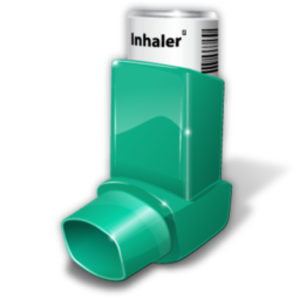 Parents who find they have a child or children receiving a diagnosis of asthma also realize that life in some part will change from this day forward. Parents will try their best to keep life going as before, but there are a few things that need a little rearranging. First the parents must discuss with the medical physician which type of asthma the child or children have and the necessary steps to take to understand what causes the asthma. Is this something genetic or is this something directly from the surrounding environment.
Parents who find they have a child or children receiving a diagnosis of asthma also realize that life in some part will change from this day forward. Parents will try their best to keep life going as before, but there are a few things that need a little rearranging. First the parents must discuss with the medical physician which type of asthma the child or children have and the necessary steps to take to understand what causes the asthma. Is this something genetic or is this something directly from the surrounding environment.
Children on average is receiving a diagnosis to some degree of the symptoms of asthma on a scale of about one in seven. Though this is an alarming fact it is something that is workable if the parents and the community come together. Individuals with a diagnosis of asthma know that at any time they run the risk of an asthma attack. There are three different stages of the asthma attack as there are asthma guidelines to help alleviate this from happing most of the time. The three stages of the asthma attack are:
- Moderate and mild asthma attacks.
- Asthma attacks that become severe.
- Second Wave of asthma attacks.
 Children receiving a diagnosis of asthma will outgrow the sudden symptoms of asthma, as they grow older. The asthma child will experience the symptoms of asthma much as an adult because no matter what age breathing becomes very difficult. The outside influences that bring on the onslaught are triggers. These triggers can be anything from inside the home, inside the classroom, or an unknown environmental issue. Researching the allergy and asthma cause and effect is sometimes difficult to narrow down, but it is necessary for the well-being of the child or children.
Children receiving a diagnosis of asthma will outgrow the sudden symptoms of asthma, as they grow older. The asthma child will experience the symptoms of asthma much as an adult because no matter what age breathing becomes very difficult. The outside influences that bring on the onslaught are triggers. These triggers can be anything from inside the home, inside the classroom, or an unknown environmental issue. Researching the allergy and asthma cause and effect is sometimes difficult to narrow down, but it is necessary for the well-being of the child or children.
Parents also need to research to find out if asthma runs through the family genes in order to receive a proper diagnosis from the medical physician. The asthma attack in the child or children stemming from a genetic disorder is one that will require additional asthma medication along with an asthma inhaler. However, with children the balance between medications is a very delicate one because most medication is for adults. There are three things that happen within the lungs making the passageway become narrow. These changes are:
- Wall muscles become constricted.
- Airways become very swollen, restricting airflow.
- Blocking the narrow airways is a buildup of mucus.
 Parents and children must research the cause, as sometimes allergens will have the same reaction. The airways become very narrow and breathing becomes difficult when severe allergies take hold. The common allergens affecting children and adults alike are various pollens, house dust mites, mold, and dander from cats and dogs. When there are pets within the household, the parents must find out if their child or children are experiencing an allergic reaction to the family pets.
Parents and children must research the cause, as sometimes allergens will have the same reaction. The airways become very narrow and breathing becomes difficult when severe allergies take hold. The common allergens affecting children and adults alike are various pollens, house dust mites, mold, and dander from cats and dogs. When there are pets within the household, the parents must find out if their child or children are experiencing an allergic reaction to the family pets.
Allergens also pose a threat when parents find their child or children are allergic to the material furniture, like sofa’s, cushioned chairs, ottomans, draperies, and rugs. Most of these particular items will cause an allergy and asthma attack because of the formaldehyde, especially within carpeting. Some parents will find they must remove all carpeting from the home and have hardwood floors installed. This does become a very big expense, but the health of the child or children far outweigh the cost of making a few minor adjustments to the home.
Related Articles
